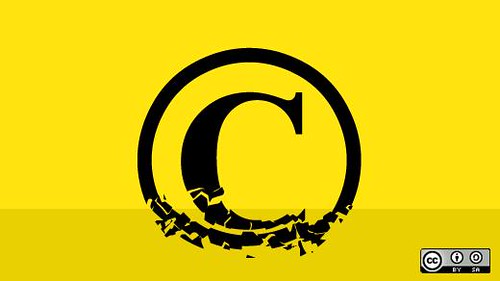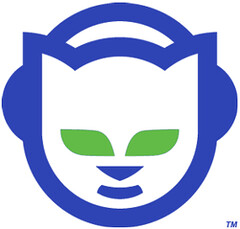Copy Right!

I thought on so many lines which I could write about when it comes to this topic. Kim’s link to Larry Lessig’s TED Talk did speak about how the past relates to future when it comes to laws which are incompatible and have a hard time keeping up with fast paced innovations.

It also brings to mind ‘Napster’ and all what followed – commonly known as P2P revolution. but the image above represents what came to my mind instantly when thinking about (c)opyright. I currently work and live in China and this country is known to be ignorant of words like copyright or intellectual property and it has a profound effect on the perceptions and minds of people who belong to this land or have spend parts of their lives here. It slowly becomes acceptable to observe and be part of the erosion of these concepts in our life. We indulge in purchase of knock offs and copied/cloned

articles of merchandise in the multitude of shops and on Tao Bao. At the same time we consume a huge amount of entertainment media at zero cost when in other places in the world we would have to pay an appropriate sum of money to compensate for the work.
The discussion to have with not only students but also adult is a difficult one. The respect and worth of someone’s work needs to be explained in practical terms not only by words but also by actions, examples and better yet with a project which involves creation of content or a product by the students themselves.
When the efforts, time and even money is spent in creation of an object or content the realisation of the effects of ‘piracy’ becomes clear. As Larry rightly says in his TED Talk that extreme cannot be fought with extremism. There has to be a right balance to allow the creativity flourish and the respect of intellectual property given where it’s due. A parody of Gangnam Style by WAB‘s Grade 10 students was made about 2 years back and it earned them due praise as well as a great discussion on copyright and remixing.
At WAB we have a thriving ‘Broadcast Team‘ which covers and livestreams WAB events and is totally run by students. Students not only learn the creative arts of filming and commentating as well as handling the tech gadgets involved but also respect of intellectual property and an understanding of copyright. We had several speakers and theatrical productions where student teams sought appropriate licensing permissions

including rights to record and broadcast live to Internet audience. Librarians work hard with students to instil the understanding of copyright, fair use, acknowledgements, citations and at the same time water the seed of creativity in students.
I believe that if we continue to educate our next generations the joys of remixing with respect of original content and understanding of ‘livelihood’ for the creators of content we will be successful in striking the ‘balance’ Larry speak about in his talk. At WAB this is being done beautiful despite the DVD shop next door which sells all the latest released of Hollywood at 3US$ a piece and the one next to it continues to flourish selling fake Samsung Note phablets for 200US$ 🙂









2 COMMENTS
Awesome! So great to see how WAB is bringing to life everything we’ve been reading/watching. It is so challenging to both build understanding about copyright and then model making good choices when living in a country that doesn’t really have those expectations. It was the same when I lived in Thailand. Well done WAB for making it work!
I also teach at a school in China, NCPA, near Guangzhou. I am guilty of purchasing those 10 RMB DVDs, despite having moved to China without having ever downloaded something from Torrent or any other site of that nature (I held out for over a year, but after 3 years I now have quite a collection). We have had quite the struggle with our students (100% Chinese population) and the copy-paste homework/project issue. It took me a while to understand that our 9th graders genuinely saw no problem with copying and pasting a paragraph from Wikipedia (or worse from Baidu, then putting it in Google Translate) and then putting their name on it. We have been working with our students on the art of paraphrasing and citing works. Last year our librarian discovered something called Noodle Tools (https://www.noodletools.com/), which has a variety of features that help students learn to research, cite, paraphrase and organize their information into a project. It has two features that I feel are key to the use of this website, 1) a student’s account can be shared between multiple people (we most often share between the student, the librarian, the classroom teacher and the EAL teacher) all of whom can see the work being done and write comments. 2) It forces students to work through the paraphrasing & citing process using notecards, students fill in the blanks to create a citation, then copy & paste the information they would like to use, then paraphrase it in another box on the same notecard. We have had a lot of success with this, having the format to follow and forcing students to do it has really helped many of them understand how to produce their own work and do research. I admire your school’s progress in this area and would love to hear more about how you have students create their own work to help them understand the work and value that research, a song, movie etc. has…I will definitely use that example in my own classes.